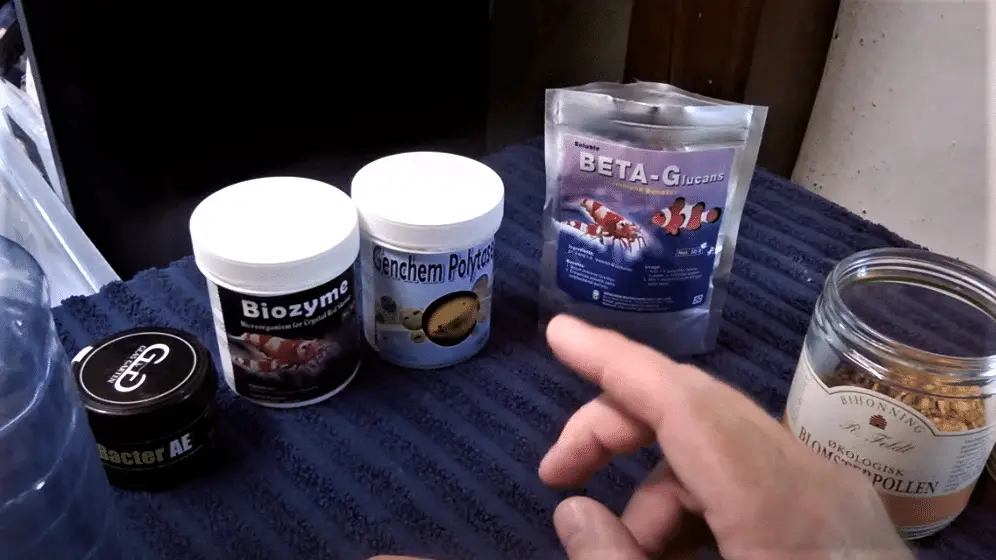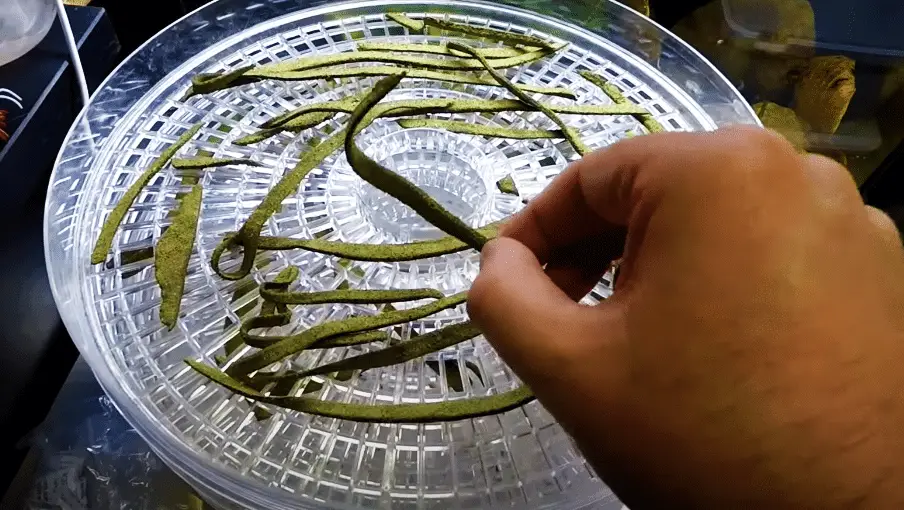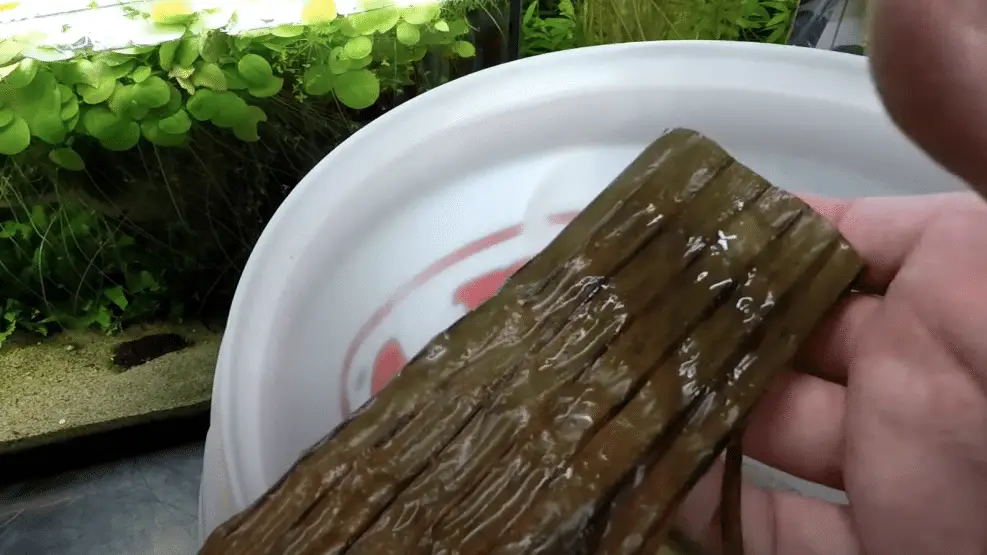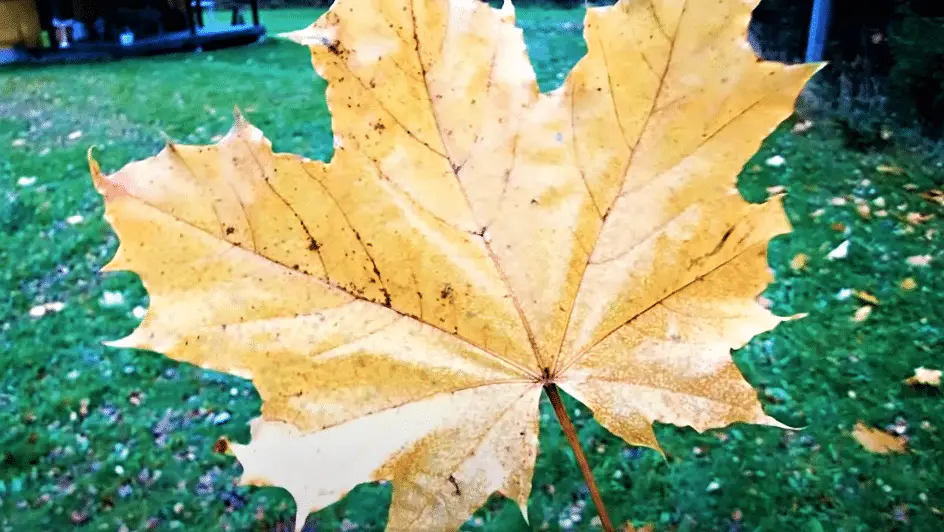I. Introduction
In this comprehensive guide, we will cover everything you need to know about how to feed shrimp.
First, we will discuss store-bought foods. Many commercial shrimp foods are available in the market and come in different forms, such as pellets, flakes, or frozen. These foods are convenient and can provide your shrimp with a complete and balanced diet, but it is important to choose a high-quality food that meets the specific nutritional needs of your shrimp. Some popular brands of shrimp food
are available in the market and come in different forms, such as pellets, flakes, or frozen. These foods are convenient and can provide your shrimp with a complete and balanced diet, but it is important to choose a high-quality food that meets the specific nutritional needs of your shrimp. Some popular brands of shrimp food include Omega One, Hikari, and Fluval.
include Omega One, Hikari, and Fluval.
Next, we will explore DIY foods. Making your own shrimp food can be a fun and cost-effective way to offer your shrimp a diverse diet. You can use a variety of ingredients such as vegetables, proteins, and supplements to create a customized food that meets the unique needs of your shrimp. Some popular DIY recipes include spinach and spirulina gel food.
We will also touch on natural food sources. Shrimp are natural scavengers and will graze on a variety of natural food sources in their environment, such as decaying plant matter, algae, and biofilm. Providing natural food sources in your tank can help supplement your shrimp’s diet and promote a more natural and diverse environment for them to thrive.
Additionally, we will cover how to prepare food for your shrimp. Properly preparing food for your shrimp is essential to ensure that they can digest and utilize the nutrients effectively. Blanched vegetables are a popular food option for shrimp , and it is important to blanch them properly to make them easier to eat and digest. We will also discuss the importance of not overfeeding and keeping the tank clean to maintain good water quality for your shrimp.
, and it is important to blanch them properly to make them easier to eat and digest. We will also discuss the importance of not overfeeding and keeping the tank clean to maintain good water quality for your shrimp.
Lastly, we will touch on baby shrimp food. Baby shrimp have unique nutritional needs and require a different diet than adult shrimp. Pollen and ground-up goldfish flakes are popular food options for baby shrimp, but other food options such as Bacter AE, powdered spirulina.
food. Baby shrimp have unique nutritional needs and require a different diet than adult shrimp. Pollen and ground-up goldfish flakes are popular food options for baby shrimp, but other food options such as Bacter AE, powdered spirulina.
In summary, feeding your aquarium shrimp a balanced and varied diet is crucial for their overall health and well-being. In the following sections of this guide, we will provide more in-depth information on each type of food source and offer tips on how to incorporate them into your shrimp’s diet.
a balanced and varied diet is crucial for their overall health and well-being. In the following sections of this guide, we will provide more in-depth information on each type of food source and offer tips on how to incorporate them into your shrimp’s diet.

II. Store-Bought Foods
While it’s possible to create a varied and balanced diet for your shrimp using DIY or natural food sources, store-bought foods can be a convenient and easy option to supplement your shrimp’s diet. In this section, we will explore the pros and cons of using store-bought shrimp food, list some popular brands and types of shrimp food, and explain how to choose the right food for your shrimp.
Pros and Cons of Store-Bought Foods
One of the main benefits of using store-bought shrimp food is convenience. These foods are readily available at most pet stores and online retailers, and can be a quick and easy way to supplement your shrimp’s diet. They also often come in a variety of forms, including pellets, flakes, or frozen, and are specifically formulated to meet the nutritional needs of shrimp.
However, there are also some downsides to using store-bought shrimp food. Some brands may contain fillers or low-quality ingredients, which can lead to poor nutrition and health problems for your shrimp. Additionally, store-bought food may not offer the same variety or freshness as natural or DIY food options, which can limit your shrimp’s access to certain nutrients.
Popular Brands and Types of Shrimp Food
There are many brands of shrimp food available on the market, each with its own unique formula and nutritional content. Some popular brands of shrimp food include Omega One, Hikari, and Fluval. These brands offer a variety of food types, such as algae wafers, shrimp pellets, and frozen shrimp cubes.
When choosing a type of shrimp food, it’s important to consider the nutritional content and the specific needs of your shrimp. For example, some shrimp food may contain high levels of protein, which can be beneficial for growing shrimp, but may not be necessary for adult shrimp. It’s also important to check the ingredient list to ensure that the food does not contain fillers or low-quality ingredients.
Choosing the Right Food for Your Shrimp
When choosing a store-bought shrimp food, it’s important to consider the specific needs of your shrimp. Different species of shrimp have different dietary requirements, so it’s important to choose a food that is appropriate for your shrimp’s species. Additionally, factors such as the age and size of your shrimp, as well as any health issues, should also be taken into account.
It’s also important to provide a varied diet for your shrimp, even when using store-bought food. This can help ensure that your shrimp receive all of the necessary nutrients and can prevent boredom and overconsumption of certain types of food.
In summary, store-bought shrimp food can be a convenient and easy way to supplement your shrimp’s diet. When choosing a type of food, it’s important to consider the nutritional content, the specific needs of your shrimp, and to provide a varied diet to ensure optimal health and nutrition.

III. DIY Foods
DIY shrimp food can be a fun and cost-effective way to offer your shrimp a diverse and nutritious diet. In this section, we will explore the benefits of making your own shrimp food, explain how to make DIY shrimp food using ingredients like vegetables, proteins, and supplements, and provide some recipe ideas.
Benefits of DIY Foods
One of the main benefits of DIY shrimp food is that it allows you to customize your shrimp’s diet to meet their specific nutritional needs. You can choose high-quality ingredients and supplements to ensure that your shrimp are receiving the best possible nutrition. Additionally, making your own food can be cost-effective, as you can use ingredients that are readily available and inexpensive.
Another benefit of DIY shrimp food is that it can provide your shrimp with variety and novelty in their diet.
Making DIY Shrimp Food
To make your own shrimp food, you can use a variety of ingredients such as vegetables, proteins, and supplements. Vegetables such as zucchini, cucumber, spinach, and broccoli are popular options that are high in nutrients and easy to prepare. Proteins such as fish, shrimp, or krill can also be used to provide a source of protein and omega-3 fatty acids. Supplements such as calcium and vitamins can also be added to improve the nutritional content of the food.
To make DIY shrimp food, simply blend the ingredients in a food processor or blender and then shape the mixture into small pellets or cubes. You can then freeze or dry the food to preserve it for later use.
Here are a few recipe ideas for DIY shrimp food:
- Spinach and Spirulina Gel Food: Blend spinach, spirulina powder, gelatin, and water in a food processor until smooth. Pour the mixture into a shallow dish and let it set in the refrigerator. Cut the gel into small cubes and freeze for later use.
- Frozen Shrimp Cocktails: Blend cooked shrimp, frozen peas, and a small amount of gelatin in a food processor until smooth. Shape the mixture into small cubes and freeze for later use.
In summary, DIY shrimp food can be a fun and cost-effective way to provide your shrimp with a varied and nutritious diet. By using high-quality ingredients and supplements, you can create a customized diet that meets the specific needs of your shrimp. With a little creativity, making your own shrimp food can be a fun and rewarding activity for both you and your shrimp.
IV. Natural Foods
In addition to store-bought and DIY shrimp food, natural food sources can provide your shrimp with a diverse and balanced diet. In this section, we will explore the benefits of supplementing your shrimp’s diet with natural food sources, list some natural foods that shrimp can eat, such as decaying plant matter, algae, and biofilm, and discuss the benefits of feeding shrimp natural foods.
Benefits of Natural Foods
Shrimp are natural scavengers and will graze on a variety of natural food sources in their environment. Providing natural food sources in your tank can help supplement your shrimp’s diet and promote a more natural and diverse environment for them to thrive. Additionally, natural food sources can provide a variety of nutrients and minerals that may not be available in commercial or DIY shrimp food.
Natural Foods for Shrimp
There are many types of natural food sources that shrimp can eat, including decaying plant matter, algae, and biofilm. Decaying plant matter, such as leaves, can provide a source of fiber and minerals. Algae, such as spirulina, can provide a source of protein, vitamins, and antioxidants. Biofilm, which is a thin layer of microorganisms that grows on surfaces in the tank, can provide a source of bacteria and other microorganisms that are important for shrimp health.
Benefits of Feeding Shrimp Natural Foods
Feeding shrimp natural foods can have many benefits. For example, natural food sources can help promote a more natural and diverse environment in the tank, which can reduce stress and improve overall health. . Finally, feeding natural food sources can be a cost-effective way to supplement your shrimp’s diet, as many natural food sources can be found in or around the tank.

V. How to Prepare Food
Properly preparing food for your shrimp is essential to ensure that they can digest and utilize the nutrients effectively. In this section, we will discuss the importance of preparing food for your shrimp, provide instructions on how to blanch vegetables and prepare other types of food, and mention the importance of not overfeeding and keeping the tank clean.
Importance of Preparing Food
Preparing food for your shrimp is essential to ensure that they can digest and utilize the nutrients effectively. Shrimp have a delicate digestive system and can easily become sick if they consume food that is not properly prepared. Additionally, overfeeding or not cleaning up excess food can lead to poor water quality, which can cause health problems for your shrimp.
Blanching Vegetables
Blanching vegetables is a popular way to prepare food for shrimp. To blanch vegetables, simply boil them for a short amount of time, usually around 30 seconds to 1 minute, until they become tender but not mushy. Immediately after boiling, place the vegetables in a bowl of cold water to stop the cooking process and preserve their texture and color.
Blanched vegetables can be offered to shrimp directly or can be frozen for later use.
Other Types of Food
In addition to blanched vegetables, there are many other types of food that shrimp can eat. For example, proteins such as shrimp, krill, or fish can be offered to supplement their diet. Commercial or DIY shrimp food can also be offered, but it’s important to choose high-quality food that meets the nutritional needs of your shrimp.
When offering any type of food, it’s important to avoid overfeeding. Shrimp have a small stomach and can only eat a small amount of food at a time. Overfeeding can lead to poor water quality and health problems for your shrimp.
Keeping the Tank Clean
Keeping the tank clean is essential for maintaining good water quality for your shrimp. Uneaten food and other waste can quickly accumulate and lead to poor water quality, which can cause health problems for your shrimp. It’s important to remove any excess food from the tank after feeding, and to perform regular water changes to remove any buildup of waste and debris.
In summary, properly preparing food for your shrimp is essential to ensure that they can digest and utilize the nutrients effectively. Blanching vegetables is a popular way to prepare food for shrimp, but other types of food, such as proteins and commercial or DIY shrimp food, can also be offered. It’s important to avoid overfeeding and to keep the tank clean to maintain good water quality for your shrimp.

VI. Baby Shrimp Food
Baby shrimp have unique nutritional needs and require a different diet than adult shrimp. In this section, we will explore the nutritional needs of baby shrimp, list some popular types of baby shrimp food, such as pollen and ground-up goldfish flakes, and discuss how to provide a balanced and varied diet for baby shrimp.
Nutritional Needs of Baby Shrimp
Baby shrimp have unique nutritional needs and require a diet that is high in protein and other nutrients to support their growth and development. It’s important to provide a variety of different types of food to ensure that baby shrimp receive all of the necessary nutrients for optimal health.
Additionally, baby shrimp are small and have delicate digestive systems, so it’s important to provide food that is small and easy to digest.
Popular Types of Baby Shrimp Food
There are many types of baby shrimp food available on the market, each with its own unique formula and nutritional content. Some popular types of baby shrimp food include pollen, which is a high-protein food that is derived from bee pollen, and ground-up goldfish flakes, which are a high-protein and high-fat food that can help support the growth and development of baby shrimp.
Other types of food that can be fed to baby shrimp include Bacter AE , powdered spirulina, and green water, which is water that has been allowed to grow algae and other microorganisms.
, powdered spirulina, and green water, which is water that has been allowed to grow algae and other microorganisms.
Providing a Balanced and Varied Diet
To provide a balanced and varied diet for baby shrimp, it’s important to offer a variety of different types of food. This can help ensure that they receive all of the necessary nutrients for optimal health and development.
When feeding baby shrimp , it’s important to provide food that is small and easy to digest. This can include finely ground commercial or DIY shrimp food, or small pieces of blanched vegetables or proteins.
, it’s important to provide food that is small and easy to digest. This can include finely ground commercial or DIY shrimp food, or small pieces of blanched vegetables or proteins.
In summary, baby shrimp have unique nutritional needs and require a diet that is high in protein and other nutrients to support their growth and development. Offering a variety of different types of food, such as pollen and ground-up goldfish flakes, can help ensure that baby shrimp receive all of the necessary nutrients for optimal health. Additionally, providing food that is small and easy to digest can help support their delicate digestive systems.

VII. Other Food Sources
In addition to store-bought, DIY, and natural foods, there are other food sources that shrimp can eat. In this section, we will explore some of these food sources that should be in your tank in moderation all of the time and can be added a little bit more for when people go on vacation .
.
Wood and leaves
Another option for providing food for shrimp is to use wood and leaves as a food source. As wood and leaves decay in the tank, they release nutrients and microorganisms that can be eaten by shrimp. Additionally, the process of decaying can help to create a more natural and diverse environment for shrimp.
When using wood and leaves as a food source, it’s important to choose types that are safe for shrimp and to avoid using any that have been treated with chemicals.
Don’t use leaves and wood that are collected by the roadside or by farmers’ fields these can be contaminated, it’s best to go into a natural woodland and pick up stuff lying around; just make sure you are allowed to collect things because in some woodlands you are not.
Types of wood that are safe for shrimp include Malaysian driftwood, spider wood, mopani wood, manzanita wood, cholla wood.
Leaves that are safe for shrimp include Indian almond leaves, banana leaves, mulberry leaves, and guava leaves, walnut leaves, oak leaves, birch leaves.
If you go on vacation, wood and leaves are the perfect holiday food for your shrimp; make sure every shrimp tank you have has at least one piece of wood in it all the time; next, add a few extra leaves. These leaves will start to decay and provide your shrimp with food via biofilm for weeks.

VIII. Conclusion
Providing a balanced and varied diet is essential for the health and well-being of shrimp. In this section, we will summarize the key points covered in this article and emphasize the importance of offering a diverse range of food sources for shrimp.
Summary of Key Points
Throughout this article, we have discussed a variety of different types of food that shrimp can eat, including store-bought, DIY, natural, and other food sources. We have explored the benefits of each type of food and provided instructions on how to prepare and offer them to shrimp.
We have also emphasized the importance of offering a balanced and varied diet for shrimp, which can help ensure that they receive all of the necessary nutrients for optimal health and development. This can include a combination of different types of food, including vegetables, proteins, supplements, natural food sources, and holiday foods.
Additionally, we have discussed the importance of properly preparing food for shrimp, avoiding overfeeding, and keeping the tank clean to maintain good water quality.
Importance of a Balanced and Varied Diet
Offering a balanced and varied diet for shrimp is essential to ensure that they receive all of the necessary nutrients for optimal health and development. Providing a diverse range of food sources can help prevent overconsumption of certain types of food, which can lead to health problems for shrimp.
Additionally, a balanced and varied diet can help promote a more natural and diverse environment in the tank, which can reduce stress and improve overall health.
In conclusion, providing a balanced and varied diet is essential for the health and well-being of shrimp. By offering a diverse range of food sources and properly preparing and feeding them, you can ensure that your shrimp receive all of the necessary nutrients for optimal health and development. Remember to avoid overfeeding, keep the tank clean, and research your shrimp species’ specific needs and nutritional requirements for best results.
FAQ Section
Q: What do shrimp eat? A: Shrimp are omnivores, which means they can eat both plant and animal matter. Some common foods for shrimp include algae, detritus, small pieces of vegetables (such as zucchini or spinach), and protein sources like brine shrimp, bloodworms, or pellets.
Q: How often should I feed my shrimp? A: It’s generally recommended to feed your shrimp once a day. However, if you have a heavily stocked tank, you may need to feed them more often to ensure they’re getting enough food.
Q: How much should I feed my shrimp? A: Shrimp have small stomachs and can only eat a little bit at a time, so it’s best to feed them small amounts of food at a time. A good rule of thumb is to feed them an amount that they can consume within 2-3 minutes.
them an amount that they can consume within 2-3 minutes.
Q: What’s the best way to feed my shrimp? A: There are a few different ways to feed your shrimp. You can drop small pieces of food directly into the tank, use a feeding dish to prevent food from spreading around the tank, or use a feeding cone to target a specific area of the tank.
Q: Can I overfeed my shrimp? A: Yes, overfeeding can be a problem for shrimp. Uneaten food can decompose and create ammonia in the tank, which can be harmful to your shrimp. It’s best to avoid overfeeding and remove any uneaten food from the tank after a few hours.
Q: Do I need to supplement my shrimp’s diet? A: Depending on the type of shrimp you have, you may need to supplement their diet with specific nutrients. For example, some types of shrimp require a source of calcium to maintain their exoskeletons. It’s important to research the specific dietary needs of your shrimp to ensure they’re getting everything they need.
Q: Can I feed my shrimp human food? A: Some human foods can be safe for shrimp in small amounts, such as blanched vegetables or bits of cooked egg. However, it’s important to avoid foods that are high in salt or seasoning, as these can be harmful to your shrimp. It’s generally best to stick to commercial shrimp food or specific types of fresh food that have been researched and recommended for shrimp.

